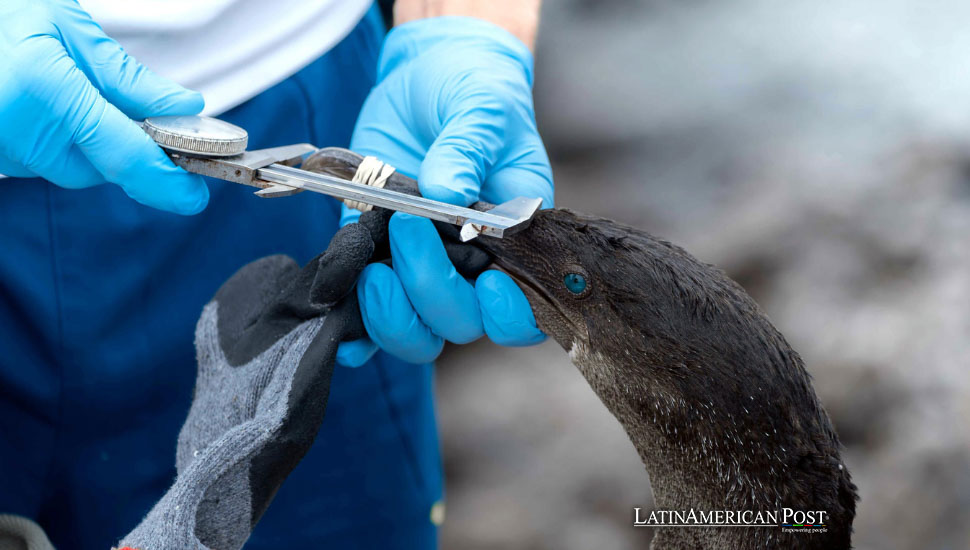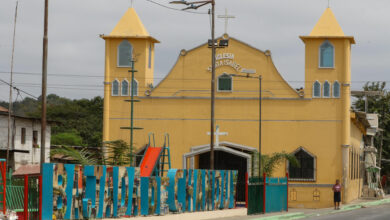Investigating Heavy Metal Contamination in Ecuador’s Galápagos Birds

Scientists are investigating the origins of heavy metals like lead and cadmium found in penguins, cormorants, flamingos, and albatrosses in the Galápagos Islands. This groundbreaking research aims to understand the impact on the region’s unique ecosystems and develop conservation strategies.
Uncovering the Presence of Heavy Metals in Galápagos Birds
The Galápagos Islands, declared the world’s first UNESCO World Heritage Site in 1978, are home to an extraordinary diversity of wildlife, including marine birds that play a critical role in the ecosystem. However, recent studies have uncovered alarming signs of heavy metal contamination in some of the region’s most iconic species, including penguins, cormorants, flamingos, and albatrosses. This research, led by the Charles Darwin Foundation (FCD) in collaboration with the Galápagos National Park, aims to understand the extent of contamination and its potential risks to the fragile ecosystem.
The project began in 2010 and involved collecting and analyzing feathers from the birds above the species. By examining biochemical markers, scientists can detect the presence of harmful metals such as lead, cadmium, and mercury. The findings are concerning—flamingos, cormorants, and penguins have shown elevated concentrations of lead and cadmium in their systems, raising questions about these toxins’ origins and long-term effects.
Gustavo Jiménez, a senior researcher with the FCD, explained that the penguins of Marielas Islet, located near Isabela Island, exhibited the highest contamination levels, even more so than colonies in other parts of the archipelago. “The penguins in this pristine area had higher values than the other colonies, which can be attributed to the volcanic origin of the islands, where metals naturally occur,” Jiménez shared with EFE. This discovery has sparked further investigation into the role of the islands’ geological makeup in the contamination process.
Natural or Human-Origin
The next step in the research is to determine whether the metals found in the birds originate from natural sources or human activity. The Galápagos Islands, with their volcanic history, may naturally harbor metals such as lead and cadmium in their soil. However, the increasing presence of these substances, coupled with modern environmental challenges like climate change and pollution, suggests that human-induced factors could also contribute to the contamination.
Scientists believe marine currents and atmospheric patterns may carry these pollutants from other regions. The isolated nature of the Marielas Islet, which acts like a “spoon” collecting marine debris and sediments, could explain why penguins in this area are more heavily impacted. Similarly, flamingos, which inhabit closed-off lagoons with limited water exchange, are also at risk of accumulating heavy metals over time. These findings highlight the complexity of understanding the environmental health of the Galápagos and the myriad factors influencing its ecosystems.
“While the islands have evolved with these metals for millions of years, there is a concern that increased levels due to external sources could pose new threats,” Jiménez pointed out. He further emphasized that heavy metals may reach the islands through atmospheric or marine currents, potentially linked to industrial activity on the South American mainland or other parts of the world.
In an unexpected twist, researchers initially hypothesized that albatrosses—migratory birds that leave the Galápagos to travel along the coasts of Ecuador, Peru, and Chile—would show the highest levels of contamination due to increased exposure to human activities and pollutants from ships and industrial runoff. However, test results revealed that albatrosses exhibited surprisingly low levels of contamination, with readings “below detectable limits.” This has prompted further research to understand why some species are more vulnerable than others.
The Ecological Impact on Bird Populations
The presence of heavy metals like lead and cadmium in birds is not just a scientific curiosity; it carries profound ecological implications. Heavy metal toxicity can severely affect birds’ reproductive systems, leading to issues such as malformed eggs, reduced hatching success, and even infertility. Additionally, these metals can damage the digestive and neurological systems, compromising the birds’ overall health and survival.
Introducing heavy metal contamination could have devastating effects on species like the Galápagos penguin, which already faces significant challenges due to climate change and food scarcity. The Galápagos penguin is one of the smallest penguin species in the world and is highly dependent on the region’s unique ecosystem for its survival. Increased contamination could exacerbate their pressures, potentially threatening their populations in the long term.
Flamingos, known for their vibrant pink coloring derived from the pigments in their food, are another species at risk. Contaminated water sources in their lagoons could lead to bioaccumulation of metals, affecting their health and other species within the food chain. Cormorants, expert divers who feed on fish in shallow waters, could also be ingesting metals through their prey, further spreading contamination throughout the ecosystem.
As these birds are considered “key” species by scientists, monitoring their health provides critical insight into the overall condition of the Galápagos ecosystem. The well-being of these birds is closely tied to the health of their environment, making them essential indicators of ecological balance. Any significant decline in their populations could signal broader environmental issues that require immediate attention.
Conservation Efforts and Future Research Directions
The ultimate goal of the research is to develop effective conservation strategies that can mitigate the impact of heavy metal contamination on the Galápagos’ bird populations. The data collected will be used to create science-based action plans aimed at protecting these species and preserving the islands’ ecological integrity.
One of the project’s critical aspects is understanding how human activity interacts with natural processes to influence contamination levels. By comparing colonies that have higher interactions with human activities, such as those near tourist areas, with those in more pristine regions, scientists hope to gather robust data that can inform future policies. This knowledge will be crucial in guiding the conservation efforts of both the Galápagos National Park and the wider international community.
Education and public awareness will also play a critical role in protecting the Galápagos. The unique biodiversity of the islands makes them a global symbol of natural conservation, and promoting sustainable tourism practices is essential to reducing human impact on the environment. Visitors to the islands must be made aware of the delicate balance that exists in these ecosystems and the responsibility we all share in preserving them.
The ongoing research also opens new avenues for future scientific inquiry. One of the areas of focus will be monitoring mercury levels in the birds, as mercury is another heavy metal known to have detrimental effects on wildlife. In addition, researchers will continue to study the movement of marine and atmospheric currents to better understand how contaminants travel and accumulate in isolated environments like the Galápagos.
As the research progresses, scientists remain hopeful that their findings will lead to tangible actions that protect not only the bird populations but the entire Galápagos ecosystem. The islands, which played a pivotal role in shaping Charles Darwin’s theory of evolution, continue to serve as a living laboratory, providing valuable insights into the delicate relationships between species and their environments.
Also read: Technological and Scientific Breakthroughs in Food Explored in Ecuador Exhibition
The discovery of heavy metal contamination in Galápagos birds underscores the growing environmental challenges facing one of the world’s most treasured natural heritage sites. While the source of these contaminants remains under investigation, the potential risks to bird populations and the broader ecosystem are clear. The collaborative efforts of the Charles Darwin Foundation and the Galápagos National Park offer hope that with further research and conservation strategies, the unique biodiversity of these islands can be safeguarded for future generations.




